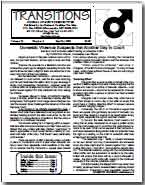Last week the Federal House of Representatives debated the Family Law Legislation Amendment (Family Violence and Other Measures) Bill 2011. During the debate, the Minister for the Status of Women, Kate Ellis, made a series of false statements to the Parliament and the Australian public. Regretfully, this disregard for the truth follows a pattern of behaviour by state Offices for Women across the country. In August 2009 after a report by the NSW Bureau of Crime Statistics and Research, the NSW Office for Women’s Policy issued errata correcting three of fourteen incorrect and misleading statistics contained in its Discussion Paper on NSW Domestic and Family Violence Strategy. In August 2010, the South Australian Ombudsman issued a report finding that the SA Office for Women had published false and/or misleading information on the Don’t Cross the Line website, had failed to correct this information, and had failed to act with reasonable diligence and speed once errors were brought to its attention.
In what appeared to be an attempt to bring gender politics into a serious debate about an issue that affects the entire community, the Minister downplayed male victims of family violence by claiming that, "while it is true that men are more likely to be victims of violence [overall], this violence occurs predominantly at the hands of a stranger and in public places, such as the street or the pub, not at the hands of a family member, not at the hands of a partner, not at the hands of those they trust the most and not in their own home."
The Minister is correct that Australian men are indeed more likely than women to experience violence at the hands of strangers and in public places. What she seems to be unaware of, however, is that this does not mean that men are less likely than women to experience violence at the hands of persons known to them, or in the home.
Additional figures only just released from the ABS Personal Safety Survey 2005 show there is no statistically significant gender difference between the prevalence rates for male and female victims of physical assault by known perpetrators in the last 12 months. They also show there is no statistically significant gender difference between the estimates of numbers of male and female victims who experienced physical assault by family members or in the home in the most recent incident in the last 12 months.
The Minister went on to cite statistics on all violence against women (including the 25% perpetrated by other women) which further confused matters in a debate not about violence in general, not about violence against women, but about domestic and family violence. Overinflating statistics about domestic and family violence against women does nobody any good. If anything it lends support to those in the community who deny that domestic and family violence is a serious issue and reduces the credibility of legislation whose objective purports to be to reduce such violence.
Ms Ellis then claimed that separated mothers do not make false accusations of family violence and child abuse to gain a tactical advantage in family law proceedings. The only evidence she was able to provide was "a report in 2007 by the Australian Institute of Family Studies finding that the family violence allegation rates in custody proceedings in the Family Court of Australia or in the Federal Magistrates Court are similar to the reported rates of spousal violence profiles in the general divorcing population."
Surely the Minister must be aware that persons going through custody proceedings in the FCA or in the FMC are ‘the sharp end of the stick’, and are not at all representative of the general divorcing population. Therefore any correlation or not between family violence allegations/rates is meaningless.
In recent community research by VicHealth, half of all respondents said that ‘women going through custody battles often make up or exaggerate claims of domestic violence in order to improve their case’, and only 28% disagreed. It is most likely this is because they had personal knowledge of a friend or family member who had experienced this, or had experienced it themselves.
A survey of 68 NSW magistrates concerning apprehended violence orders (AVOs) found that 90% agreed that some AVOs were sought as a tactic to aid their case in order to deprive a former partner of contact with the children. A similar survey of 38 Queensland magistrates found that 74% agreed with the proposition that protection orders are used in Family Court proceedings as a tactic to aid a parent’s case and to deprive their partner of contact with their children.
There are many organisations around the country that deal with false allegations of domestic and family violence on a daily basis – Dads in Distress, Men’s Rights Agency, Lone Fathers Association, Shared Parenting Council of Australia, Dads4kids Fatherhood Foundation and Dads on the Air, to name just a few. Perhaps the minister would be wise to spend some time talking to these organisations to gather a more accurate picture of false allegations in a Family Law context.
It is clear, however, that the minister and her Government have no interest in investigating the issue of false allegations, as they have commissioned countless studies into the prevalence and impacts of domestic and family violence on separating families, but not a single study into the prevalence and impacts of false allegations. As anyone who has been on the receiving end of false allegations can attest, the impacts are utterly devastating.
Ms Ellis was not the only Government MP who misled Parliament last week. Graham Perrett, Labor MP for Moreton, claimed that "all too often it is men – occasionally women – who hurt the ones they love." Mr Perrett would do well to look at the latest statistics on child abuse released by the WA Department for Child Protection. Women made up 57% of perpetrators of substantiated cases of child maltreatment in 2007-08, and mothers were three times as likely as fathers to abuse their children.
Thankfully the minister got her facts right about one thing: child abuse and family violence are real, especially during divorce proceedings. As the recent AIFS Evaluation of the 2006 family law reforms report stated, they profoundly affect men, women and children:
Around two-thirds of these separated mothers and around half of the fathers reported that their child’s other parent had emotionally abused them prior to or during separation. One in four mothers and around one in six fathers reported that the other parent had hurt them physically prior to separation. Around one in five parents reported safety concerns associated with ongoing contact with the child’s other parent."
However there is no reason to throw away due process – as the government’s proposed amendments do – in an attempt to protect people from child abuse and family violence. Supporting what appears to be the current fashion in Federal Government circles, not only to mislead the Parliament, but to support perjury in the family court, the current draft of the Family Law Legislation Amendment (Family Violence and Other Measures) Bill 2011 effectively says to families going through the family law system, "it’s OK to lie – go ahead, you have our blessing." It does so in three ways.
Firstly, it removes the ability for the court to award costs against a party who has been found to have "knowingly made a false allegation or statement in the proceedings". Let us be clear here – under present legislation someone who makes an allegation of violence but simply lacks the evidence to support their claims cannot be found to have "knowingly made a false allegation". That is, no untoward consequences can arise for someone making a genuine report of family violence under current laws.
Secondly, it removes the "reasonableness clause" which requires that any claims of fear as the result of violence or abuse be established as reasonable – in order to prevent persons making up unwarranted claims of fear purely as a legal tactic during court proceedings.
Lastly, it widens the definition of family violence so broadly that almost every family going through relationship breakdown will fall under it. The proposed definition incorporates much normal conflict in separating families as well as the abusive behaviours of ongoing dominance or violence that must be addressed. It is unrealistic not to expect heightened emotions, and even raised voices and "put-downs", in most relationship breakdowns. There needs to be a distinction between this normal behaviour and the abuse of physical assault and emotional terrorism.
This cocktail of changes will give carte blanche to any parent (male or female) wishing to lie in court to use the spectre of family violence as a weapon against the other parent where there is animosity and conflict (and it is commonly accepted that it is primarily those failed relationships where extreme conflict exists that find their way into court). The resulting clogging up of the court system will mean that cases of serious violence and abuse will not be given the time, attention and resources they deserve.
We have heard recent reports from family law solicitors that should the proposed changes to the Family Law Act be passed, violence allegations will be attempted to be used by solicitors as a legal strategy much more often than they are currently.
Fortunately the Government’s deception and the support for perjury that the draft Bill provides were called to attention during the debate by George Christensen, member for Dawson. In his colourful but honest and straightforward speech, he dared call a spade a spade:
Mr CHRISTENSEN: Earlier in this debate we heard the Minister for the Status of Women tell this parliament that no-one uses claims of family violence in such a way. I have some very bad news for the minister: it actually does happen. It happens every day; and if she is not aware of it happening then she is gravely out of touch with reality. If the minister does not have any contact with her own constituents, perhaps she could spend a few minutes at her laptop doing some research. Here is the sort of thing that you can find in two minutes: the newspaper headline ‘Ugly feud fought on Facebook’. The article tells about a Family Court hearing late last year. At the end it says:
She had already strung the case out by falsely claiming her ex-husband had been sexually assaulting their children after one judgment went against her. Then she falsely claimed the father’s new wife had been assaulting them. ‘The mother has over the years attempted to manipulate the court system,’ Justice Barry said.
That is just one case that can be found with two minutes of Google research, and yet the minister came into this House and said that making false allegations of family violence and using family violence as a weapon in the courts is a myth. Do some homework, Minister.
The fact that this minister has told a lie to this parliament-
The DEPUTY SPEAKER (Ms AE Burke): The member will withdraw.
Mr CHRISTENSEN: I will withdraw, but I will say that the minister has told an untruth to this parliament. It is clearly not true to say that it is a myth.
It is possible to draft balanced laws designed to both protect people from violence and from false allegations of violence – both cause immeasurable harm to the lives of victims. The current Family Law Act already does this very well. It appears that gender politics are more important to this Government than the truth. They appear to care not one iota about protecting people from the false accusations of violence and abuse that all too often deny children an ongoing relationship with one of their loving parents.


